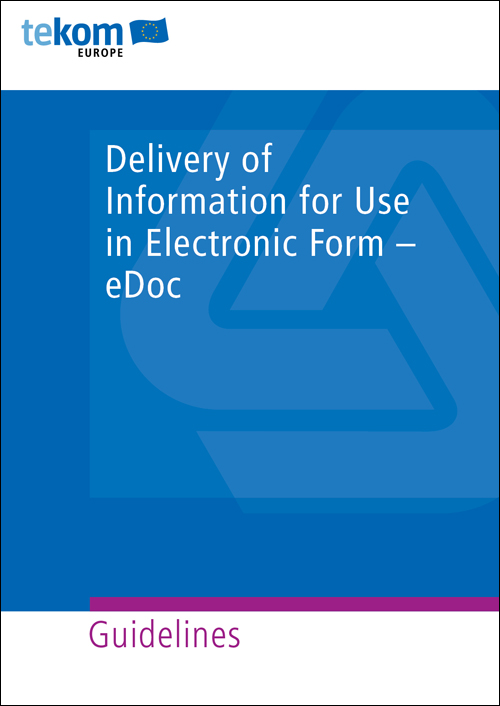
Bibliografische Information
DIN A4,
52 Seiten,
1. Edition (translated from German ed. 2018) 2018
ISBN 978-3-944449-51-7 (Softcover)
PDF,
52 Seiten,
1. Edition (translated from German ed. 2018) 2018
ISBN 978-3-944449-51-7 (E-Book PDF)
Delivery of Information for Use in Electronic Form – eDoc
Autor(en): Fritz, Heuer-James, Michael, Schmeling, Schulz
Verlag: tcworld GmbH
- Themen:
- Recht und Normen
- Kategorien:
- Richtlinien
75,00 € (für Mitglieder 50,00 €) Softcover, 52 Seiten Status: Verfügbar
60,00 € (für Mitglieder 40,00 €) E-Book PDF, 52 Seiten Lieferzeit: 2-3 Arbeitstage Status: Verfügbar
105,00 € (für Mitglieder 70,00 €) Bundle Softcover & E-Book PDF
A tekom Europe-wide survey in the year 2015 with over 1,200 participants showed that legal requirements are often seen as the main reason instructions for use are still being delivered in print instead of electronic form. tekom, with a team of over 20 experts from all relevant sectors, has drawn up a guideline that provides greater clarity on this issue. Now also published in English, this guideline will bring you up to speed on the new legal requirements.
In this guideline, tekom illustrates the current state of the art in delivering information for use in electronic form. The guideline looks at the current legal requirements regarding the form of delivery, shows an approach to creating a media concept based on use cases, and considers legal requirements.
Contents of the tekom guideline:
- Reasons to cut down on printed instructions for use
- Legal requirements: Under which circumstances is paper legally required?
- Framework advantages and disadvantages of delivering instructions for use in paper or electronic form
- Creation of a media concept based on use cases
- Recommended actions, in particular with regard to achieving legal compliance in critical cases
- References (European directives and regulations, standards)